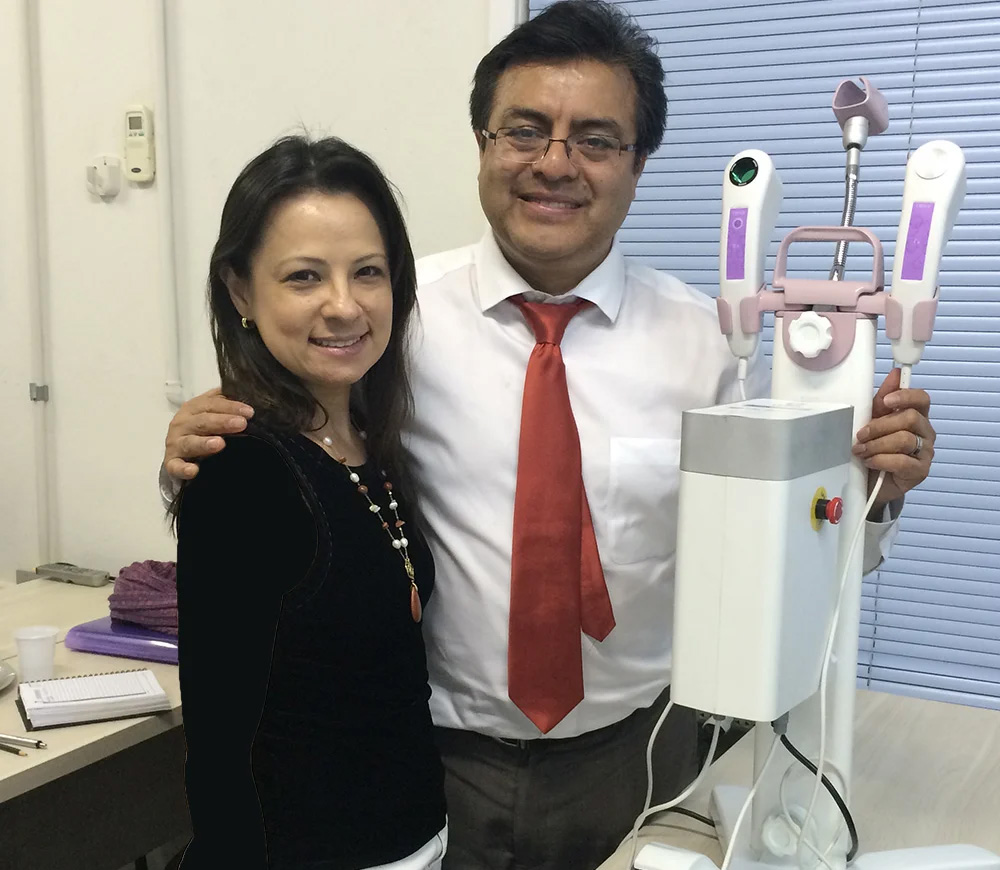CerCa Solutions
Cervical Cancer Treatment Technology
Cerca Solutions is an initiative for the prevention and cure of cervical cancer. Cervical cancer is a disease in which malignant (cancer) cells form in the cervix and spread to the rest of the body, it is the fourth most common cancer in women worldwide. The primary risk factor for cervical cancer is human papillomavirus (HPV) infection. Dr. Trujillo collaborated with Dr. Vanderlei Bagnato in 2012 to develop CerCa, a photodynamic therapeutic medical device for the treatment of the human papillomavirus (HPV) and the prevention of cervical cancer.
During his research on the human papillomavirus and its effect on cervical cancer, Dr.Trujillo became concerned about the rising mortality rates of women with cervical cancer, especially in developing countries where resources to treat the disease were limited. Dr.Vanderlei Salvador Bagnato presented him with the remarkable potential of Photodynamic Therapy (PDT) to treat cancerous and precancerous cells. Based on the principles of PDT, Dr.Trujillo collaborated with Dr. Vanderlei to develop a cervical cancer detection and treatment device called CerCa.
Cervical intraepithelial neoplasia (CIN), also known as cervical dysplasia is the abnormal growth of cells on the surface of the cervix that could potentially lead to cervical cancer. Long-lasting infection with certain types of human papillomavirus (HPV) is the main cause of cervical cancer. If CIN is diagnosed at an appropriate time before cervical cancer manifestation, it may be cured and cervical cancer prevented. CerCa presents a viable, inexpensive, and non-invasive option for the treatment of high- and low-grade CIN. The technology is a minimally invasive technique that combines the action of a photosensitizer (a compound or pro-drug that is absorbed by precancerous and cancerous cells), light, and oxygen-free radicals to induce cell death.
By using CerCa, cervical dysplasia can be detected quickly and effectively treated, eliminating the possibility of lesions progressing. Based on its ‘See and Treat’ concept, women can undergo diagnosis and receive treatment with the same device at the same time. The use of this approach is particularly useful in rural and remote settings, where diagnostic tests and treatments are not easily available. The CerCa device reduces the number of medical visits and improves patient experiences. A broad-scale implementation of CerCa could result in the eradication of cervical cancer.
The CerCa device was approved by the Brazilian health regulatory agency ANVISA [i] and by the Mexican regulatory authority COFEPRIS[ii]. The invention is patented in many countries around the world, including the USA, Canada, Mexico, China, Japan, and Europe. Dr.Trujillo was recognized across the Americas and received several awards for the CerCa invention. Dr.Trujillo and his team are currently working toward the FDA[iii] approval process.
*The United States Food and Drug Administration (FDA or US FDA) is a federal agency of the Department of Health and Human Services.
*COFEPRIS is a member of the International Council of Harmonization (ICH) and Pharmaceutical Inspection Cooperation Scheme (PIC/S) and is a Level IV National Regulatory Authority competent and efficient in the performance of the health regulatory functions recommended by PAHO / WHO.
*Brazilian Health Regulatory Agency ANVISA the National Health Surveillance Agency is a regulatory body of the Brazilian government









